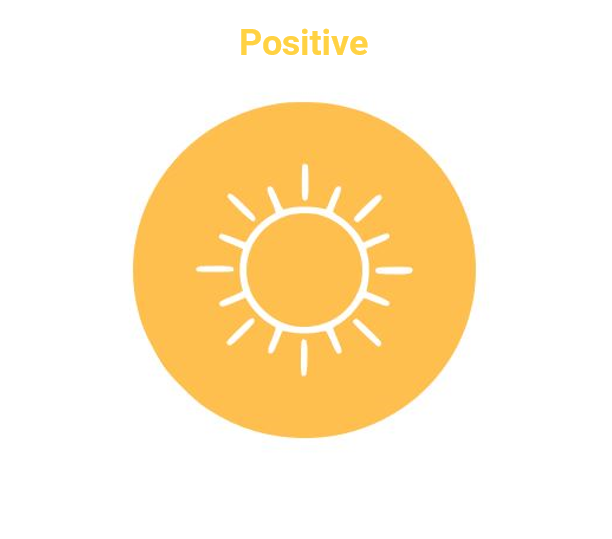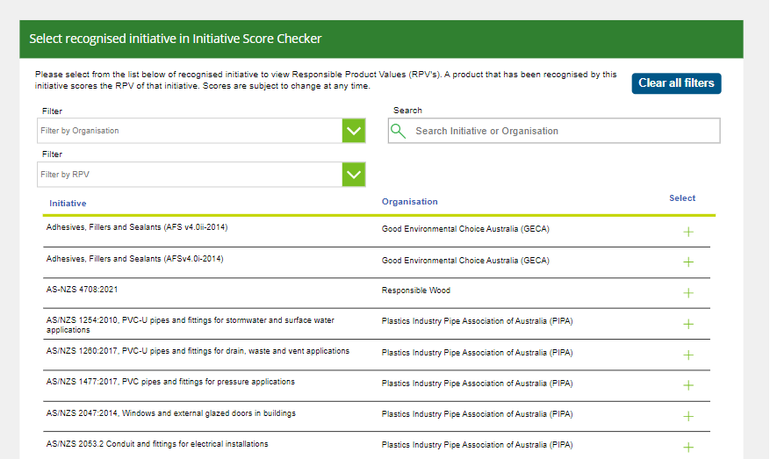A vision for a better future, for buildings and products
As our built environment continues to grow, so does the need for healthy, resilient and positive places. With buildings and fitouts contributing to around 50% of resources used worldwide and about 10% of global greenhouse emissions - it’s time to turn our focus to products.
GBCA seeks to reward the use of products that have lower environmental impact, are transparent, respect human rights, and reduce carbon content. Such products are an active part of the solution for a better future with a more healthy, resilient, positive and circular built environment.
To achieve our vision, we are already working to:
- Create a long-term roadmap to assist industry with navigating the circular economy dimensions
- Drive supply chain transformation to an approach that is more circular and less carbon intensive
- Develop online systems to help product manufacturers promote their solutions to industry
- Expand industry’s knowledge on circular economy and embodied carbon
- Advocate for a transformative circular economy

Defining Responsible Products: Responsible, Healthy, Positive and Circular
The Responsible Products Guidelines set out the criteria for all product certification schemes or similar initiatives (together referred to as 'initiatives') to be assessed against if they wish to be recognised by Green Star.
A Responsible Product Value (RPV) is the 'score' given to an initiative after assessment against the Responsible Products Guidelines.
A ‘Responsible Product’ is defined as a product or material that has an RPV issued by an initiative recognised by the Green Building Council of Australia.
There are 5 key categories in the Responsible Products Guidelines:
This category recognises activities that ensure the product manufacturer can account for climate, environmental, and health impacts of its product, and for ongoing improvements in the manufacturing process.
- Credits in this category:
- Drive and encourage the use of environmental impact declarations
- Acknowledge health impacts from components and chemicals used in the sourcing and manufacturing of products
- Require the disclosure of climate impacts from the sourcing and manufacturing of products
- Encourage a systematic approach to ongoing improvements in the manufacturing of products
This category recognises practices that improve the health impacts of buildings.
The healthy category aims to drive change in the manufacture of products with a particular view to:
- Reduce chemicals of concern (which have both significant health impacts, and act as a barrier to a circular economy),
- Ensure the manufacturing of the product does not impact on human rights; and
- Address the social health of the community where the product is being manufactured.

This category recognises products and manufacturers that are reducing or eliminating their impacts on our planet. The credits emphasize the impact that the supply chain has on resource consumption and climate. These impacts are noticeable in terms of the amount of energy, water, and waste consumed, as well as the use of non-virgin materials.
The positive category aims to drive:
- Reductions in energy and water use, and in material extraction impacts
- Deep reductions in the decarbonisation of product manufacturing - both today and within 20 years
- Protection and regeneration of natural air, water, and land resources

This category recognises strategies and practices to ensure products are designed to reduce the amount of virgin materials used, and to maintain the product at its highest value for as long as possible, while eliminating waste and pollution, and regenerating nature. This category seeks to do this by:
The circular category seeks to do this by focussing on:
- Encouraging the use of design for disassembly
- Reducing packaging or replacing with sustainable alternatives
- Reducing the requirement for raw materials
- Eliminating waste through design, production and packaging
- Ensuring processes do not produce pollutants that adversely affect water, air, land, community animals or humans.
- Keeping products in circulation and ensuring they retain value for future use and users
- Regenerating nature
- Recycling product content of ‘new materials’
- Utilising collaboration and multidisciplinary action to change production processes and behaviours
- Considering end-of-life pathways
The leadership category recognises claims for new or innovative technologies, processes, or achievements beyond the core categories.
The claims awarded in this category may be inluded by the Green Building Council of Australia in future versions of the Responsible Products Guidelines to reward certain approaches.
Manufacturers should contact the Green Building Council of Australia to raise a technical question to achieve points in this category. This can be done via PAM.

Understanding eligibility for an RPV
The Responsible Products program recognises initiatives that certify products available for use in the built environment. The Green Building Council of Australia relies on third party initiatives or product certification initiatives to assess the impact that a product has against the five criteria described above.
Initiatives are required to demonstrate compliance with the minimum expectations and a selection of the technical criteria. Once these have been met, an initiative will be recognised, and an RPV will be awarded. The Green Building Council of Australia assigns RPVs to initiatives and these are passed onto the products they recognise.
See here how an RPV is used in Green Star:

While initiatives and manufacturers do not need to be members of The Green Building Council of Australia to be recognised under Green Star, there are additional benefits that may be available for those that are.
Find out more about the benefits of membership hereHow Responsible Products are recognised within Green Star
The Responsible Products credits in Green Star award points for the use of products and materials that are certified by recognised initiatives. The credits differ from tool to tool, depending on what the tool is rating, but the process remains the same.
Green Star project teams can target the Responsible Products credits by specifying products in the Responsible Products calculator that meet or exceed the thresholds for Good or Best Practice as outlined in the individual credits.
The credits require a minimum percentage of all materials (by cost) to be “responsible products”, or products that hold one or multiple initiatives recognised by these guidelines.
All products and materials and their percentage as defined by each Responsible Product credit by cost are pooled together. For example, in the Responsible Structure Credit (below) a minimum of 50% of these materials by cost need to have an RPV of 10 or above to gain the project a credit achievement.
| An RPV can currently be used in the following tools: | In the future, an RPV will be available in the following tools: |
|---|---|
| Green Star Buildings | Green Star Fitouts |
| Green Star Communities v2 |
The Responsible Products calculator
A Beta version of the Responsible Products calculator has been released. Over the coming months we will work with Green Star project teams to collect feedback on the calculator and database, before release of the final version of the calculator. GBCA will announce when the final version of the calculator has been published.
The Responsible Products calculator will allow a project team with a registered Green Star project, to submit for the responsible products credits.
The Responsible Products calculator requires the project team to enter the following information:
- The overall cost for all products relevant to each credit that both comply and do not comply
- A list of all products that are compliant (and certificates for any that are not already in the database)
- For compliant products, the proof of purchase for the selected products.
- The total cost of the works within each of the four building layers: Structure, Envelope, Systems, Finishes. This enables the assessor to check that the proportion of responsible products for each layer is compliant as claimed.
There are two ways that products can be added to the Responsible Products calculator:
- By selecting the product from the responsible products database; or
- Manual process, by which a project team manually adds all relevant information into the calculators, including each compliant initiative
Read more about the Responsible Products calculator (Beta version) in our Resources portal here
See tutorial explaining the calculator (Beta version) and database here
Access the Responsible Products calculator (beta version) via your project here
In addition to the Responsible Products calculator, the initiative score checker has been created to allow users to view the RPV for each product certification initiative as well as initiative combinations - access the score checker here.
During the beta phase of the Responsible Products Calculator, we are looking at receiving feedback from users before progressing to the final version of the app. Please provide your feedback using the "Provide Feedback" function on the Green Star Requests page.
Provide feedback hereThe Responsible Products database
The Responsible Products database is an aggregated list of products provided by multiple initiatives; it is the dataset supporting the Responsible Products calculator (Beta version).
The database:
- Contains information provided by initiatives recognised by the Responsible Products program
- Collects this information and merges products where they hold more than one initiative
- Outlines the level of compliance for each product
For GBCA account holders, access the Responsible Products database through the creation of a project here.
*Information in the database is provided by participating initiatives. Not all initiatives are able to provide this information, so it may not be a comprehensive list of all compliant products. The list is provided for project teams to assist with the Green Star submission only.
Webinar: Explaining the Responsible Products Calculator & Database
On October 12 2023, we hosted a webinar which was an introduction to both the calculator and the database.
The webinar was hosted for project teams wanting to target the Responsible Products credits, as well as product manufacturers and initiatives who are wanting to learn more about their representation in the calculator and database.
We also featured a live demonstration to take you through the nuances of how the calculator works, as well as provide time for questions and discussion.
If you missed out or would like to re-watch the webinar, follow the button below.
Watch the recording hereThe Responsible Products Score Checker
The Responsible Products Score Checker is used to view the initiatives' Responsible Product Values.
See the Responsible Products Score Checker
Quick links to useful resources
Resources for GBCA account holders
Becoming a member is an exciting opportunity for organisations to showcase their commitment to sustainability and gain recognition as leaders in the green building industry. Membership provides access to invaluable resources, tools, and expert guidance that can help organizations drive innovation, achieve green building certifications, and deliver projects with enhanced environmental performance.
Green Star is the Green Building Council of Australia’s sustainability rating system for the built environment. It is used to rate new and existing buildings, new fit-outs, and new precinct developments.

